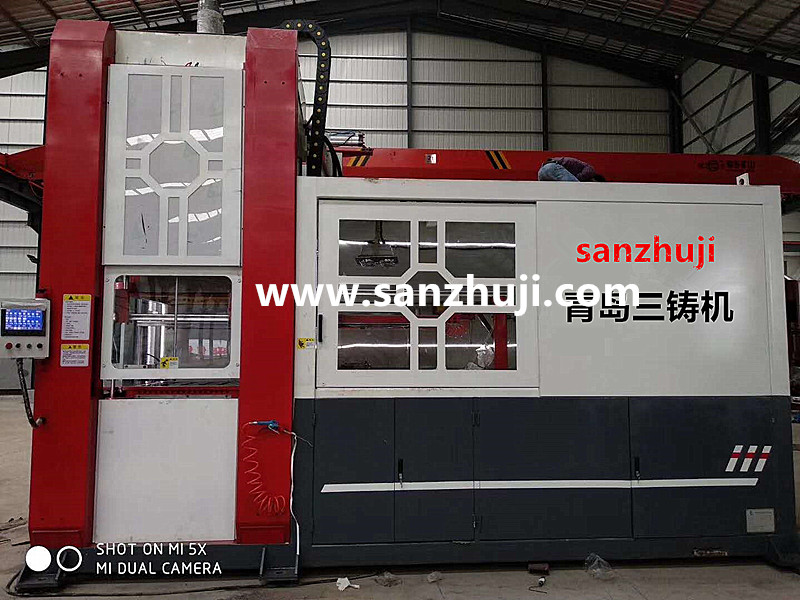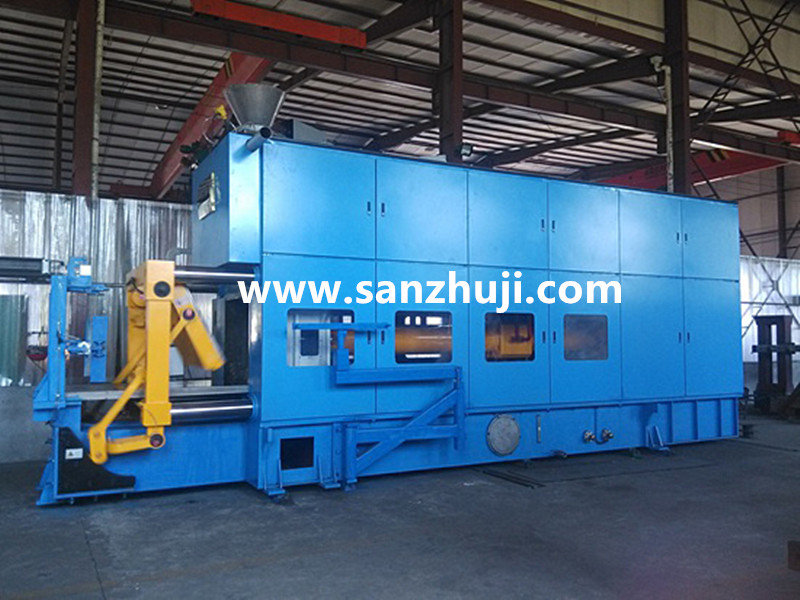4、Main process of core making of film sand
Heating temperature 200-300 ℃, curing time 30-150s, sand injection pressure 0.15-0.60 MPa. simple shape of the sand core, good fluidity of the sand can choose a lower injection pressure, thin sand core to choose a lower heating temperature, heating temperature can be extended when the curing time is low, etc.. The resin used in laminated sand is phenolic resin. Advantages of the core making process: suitable strength properties; good fluidity; sand core surface quality (Ra = 6.3-12.5μm); sand core resistance to moisture absorption; good collapse, easy to clean up the casting.
4.1. Casting (mold) temperature, is one of the main factors affecting the thickness and strength of the shell layer, generally controlled at 220 ~ 260 ℃, and selected according to the following principles:
4.11 to ensure that the resin on the laminated sand softening and curing of sufficient heat required
4.12 to ensure the formation of the required shell thickness and shell type (core) surface does not scorch
4.13 Shorten the crusting and hardening time as much as possible to increase productivity.
4.2.Sand injection pressure and time
Sand injection time is generally controlled at 3~10s, if the time is too short, the sand mold (core) cannot be formed. Sand injection pressure is generally about 0.6MPa; when the pressure is too low, it is easy to cause insufficient injection or loose phenomenon.
4.3.hardening time: the length of hardening time mainly depends on the thickness of the sand (core) and the temperature of the mold, generally in the 60 ~ 120s or so. Time is too short, the shell layer is not completely cured is low strength; time is too long, sand (core) surface layer easy to scorch affect the quality of the casting.
5、The problems and solutions in the application of clad sand
There are many kinds of core making methods, in general, can be divided into two categories of thermosetting methods and cold solids methods, laminated sand core making belongs to the thermosetting method category. Any kind of core making method has its own advantages and disadvantages, which mainly depends on the product quality requirements, complexity, production volume, production cost, product price and other comprehensive factors to decide what kind of core making method to use. The casting cavity surface quality requirements, high dimensional accuracy requirements, complex shape of the sand core using film sand core is very effective. For example: car engine cylinder head intake and exhaust sand core, water channel sand core, oil channel sand core, cylinder block water channel sand core, oil channel sand core, intake manifold, exhaust manifold shell core sand core, hydraulic valve flow channel sand core, automobile turbocharger air channel sand core and so on.
5.1.The method of determining the strength and air emission of laminated sand
Under the premise that the quality of raw sand and resin quality is certain, the key factor affecting the strength of laminated sand is mainly taken from the amount of phenolic resin added. If more phenolic resin is added, the strength increases, but the amount of gas generation also increases and the dispersibility decreases. Therefore, in the production application must control the strength of the sand to reduce the amount of gas, improve the dispersion, in the development of strength standards must find a balance point. This balance is to ensure the surface quality of the sand core and the strength of the core without deformation and core breakage during pouring. This can ensure the surface quality and dimensional accuracy of the casting, and can reduce the amount of gas, reduce the casting porosity defects, and improve the sand core performance. For sand core storage, the handling process can be used work station apparatus, sand core trolley, and 10mm ~ 15mm thick sponge on top of it, which can reduce the loss rate of sand core.
5.2.Storage period of sand core of laminated sand
Any sand core will absorb moisture, especially in the southern region, the relative humidity of the air, the sand core storage period must be specified in the process documents, the use of lean production of first-in, first-out production methods to reduce the amount of sand core storage and storage cycle. Each enterprise should combine their own plant conditions and local climatic conditions to determine the sand core storage period.
5.3.control the quality of the supply of film sand
Film sand into the factory must be accompanied by the supplier''''''''s quality assurance information, and enterprises according to the sampling standards for inspection, inspection after passing before storage. Enterprise sampling and testing failed by the quality assurance and technical departments to make the results, is a concession to accept or return to the supplier.
5.4. Core fracture and deformation found in qualified clad sand during core making
The fracture and deformation of the core during core making is often thought to be caused by the low strength of the sand. In fact, core fracture and deformation can involve many production processes. When an abnormal situation occurs, the real cause must be identified in order to solve it completely. The specific causes are as follows.
5.41 The temperature and mold retention time of the mold during core making is related to whether the crust hardening thickness of the sand core meets the process requirements. The process parameters specified in the process need to have a range, and this range needs to rely on the skills of the operator to adjust. The mold retention time can be taken as the lower limit when the mold temperature is at the upper limit, and the upper limit when the mold temperature is at the lower limit. The operators need to be trained continuously to improve their operation skills.
5.42 Phenolic resin and sand particles will be stuck on the mold during core making, which must be cleaned and sprayed with mold release agent in time, otherwise it will accumulate more and more and pull off or deform the sand core when opening the mold.
5.43 The spring top bar on the static mold of the hot core box will cause the sand core to break or deform due to long-term working under high temperature. The spring must be replaced in time.
5.44 The moving mold and static mold are not parallel or in the same center line, when the mold is closed, under the pressure of cylinder or cylinder, the front end of the positioning pin has a slope, the mold will still be tight, but when the mold is opened, the moving mold and static mold will still return to the original state so that the sand core will be broken or deformed. In this case, the sand will run away and the size of the core will become bigger. The solution is to adjust the parallelism and coaxiality of the mold in time.
5.45 in the shell core machine production of hollow sand core, from the sand core to pour out not yet hardened film sand needs to be reused, must be sieved and unused film sand according to 3:7 ratio mixed after use, so as to ensure the surface quality of the shell core sand core and sand core strength.
Qingdao Sanzhuji Equipment Manufacturing Co., Ltd. specializes in the production of sand reclamation equipment,foundry machines,Sand casting equipment,GS high efficiency rotary mixer,no-bake resin sand mixer,Jolt squeeze molding machine/Jolt-squeezing moulding machines,Multi- Piston Moulding Machine/Hydraulic multi-piston moulding machine,foundry molding machine,flaskless moulding machine,shot blasting machine,dust collector,according to the amount of old sand recovered Carry out plan customization, and provide sand reclamation equipment installation, commissioning, and training. Welcome guests to visit the factory.








